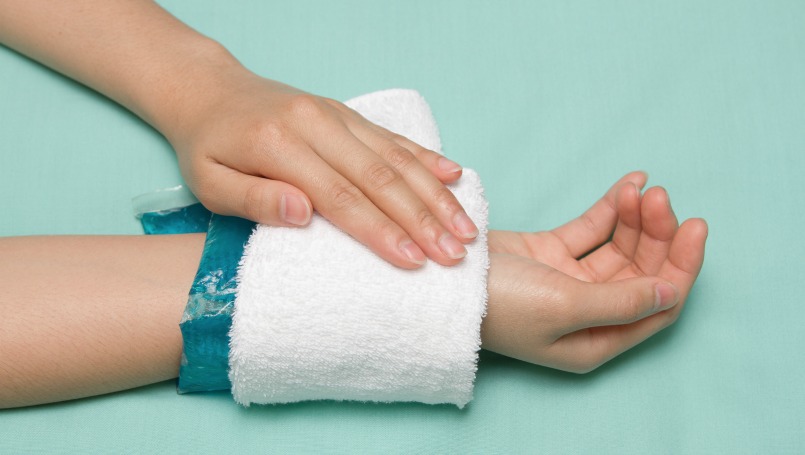
No matter what your fitness level, everyone deals with aches and pains from time to time. From the rec-league warriors and high school athletes to fitness newbies, being active can come with aches, pains and sometimes injuries.
When you find yourself in pain, or groaning a little more than normal when you stand up, it can be a tough to know whether to use ice or to apply heat to get some relief. Here’s some advice on what to do the next time you find yourself feeling a twinge.
WHEN TO ICE
When tissue is damaged (like sprains, strains or freshly pulled muscles) it causes inflammation, creating swelling, which is your body’s way of preventing you from further injuring yourself.
Applying cold is helpful when you want to reduce swelling, inflammation and pain. It can also reduce painful muscle spasms. Be sure to immediately ice a new injury to keep swelling in check and reduce the pain of pressure on the injury.
WHAT YOU SHOULD KNOW
Use an ice pack, a frozen towel, or, even a bag of frozen vegetables - peas and corn work great. Keep the ice on up to 20 minutes at a time, using a towel to avoid direct contact between the ice pack and your skin. Let the area get numb, wait and hour and then you can reapply the cold pack, if necessary. Ice should only be used up to three days following injury. After that, you might want to check-in with your doctor.
Ice application to an acute injury is generally safe. To avoid the risks, limit your usage to 20 minutes at a time and avoid using “super cold” products. Don't let yourself fall prey to frostbite due to prolonged application to fingers, toes, ears, nose. And avoid nerve injury, particularly the ulnar nerve on the inside of your elbow and the peroneal nerve on the outside of your knee.
WHEN TO HEAT
Heat helps soothe sore muscles that cause back pain or neck pain. It works best for injuries that are at least few days old. Heat opens blood vessels, which can assist the healing process and alleviate some of your pain. Additionally, some arthritis pain from stiff joints can benefit from heat as blood flow increases. Heat can also help loosen muscles when tension headaches strike.
WHAT YOU SHOULD KNOW
Use a heating pad or a warm towel to help relieve muscle aches and tension. Be sure not to cause yourself more pain and avoid burns by using a towel between the heating pad and your skin. As with ice, only apply heat for about 20 minutes at a time.
Keeping these helpful tips in your back pocket will help you get off the bench and back on your fitness track before you know it.
